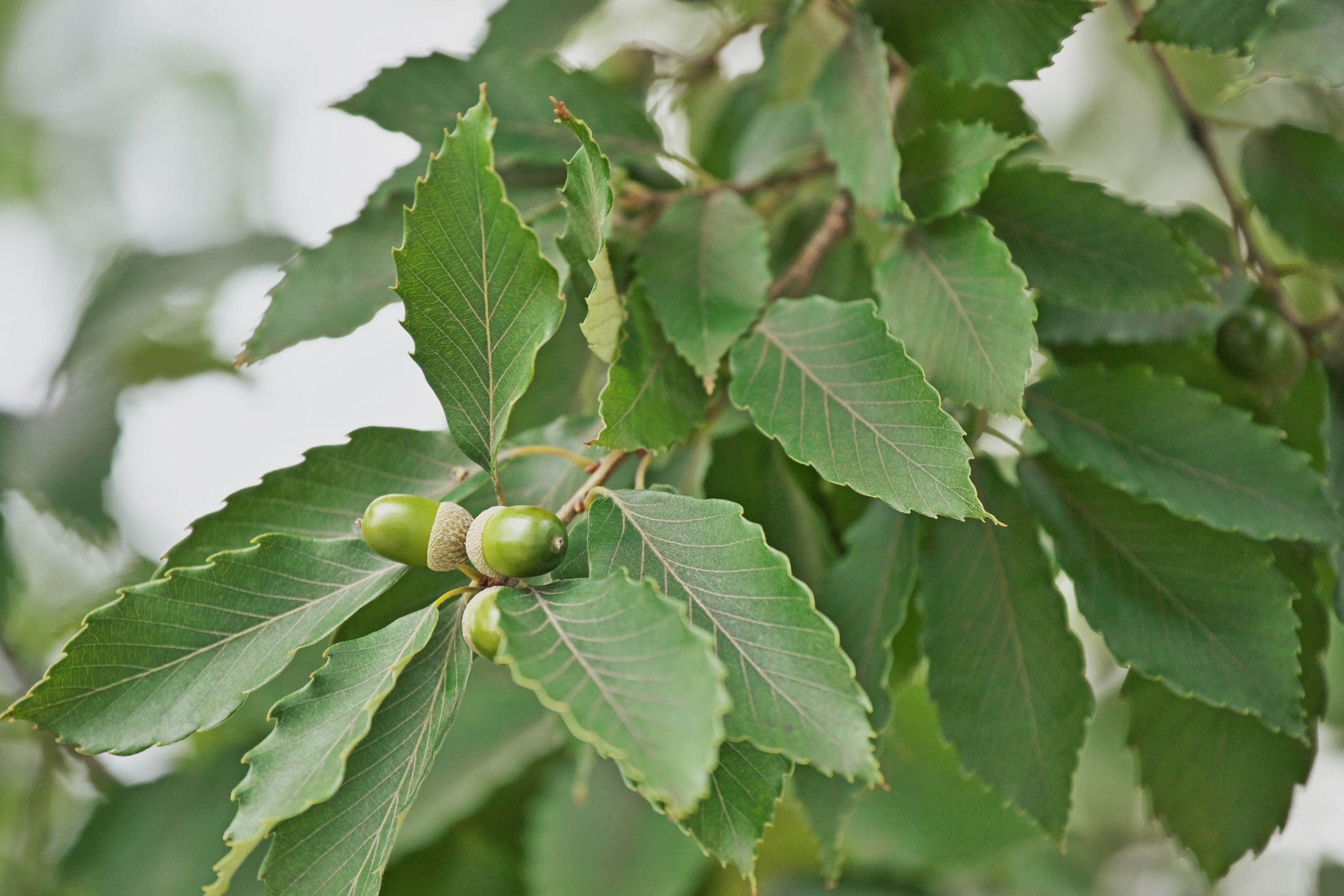Pontine oak
(Quercus pontica)

Description
Quercus pontica, the Pontine oak or Armenian oak, is a species of endangered oak currently extant to the western Caucasus mountains of Georgia and northeastern Turkey where it grows at altitudes of 1,300-2,100 m. Quercus pontica is a deciduous small tree or large shrub growing to 6–10 m tall, with a trunk up to 40 cm diameter and sparse, stout shoots. Its bark is grayish to purple-brown, smooth on young trees but becoming rough later in its life. Its leaves grow to 10–20 cm long (rarely 35 cm) and 4–15 cm across, ovate, with a serrated margin with numerous small, pointed teeth. The leaves are covered in hairs when they are young, but become smoother as they age. They become bright green later in life and turn yellow brown in autumn. The flowers are catkins, the male catkins 5–20 cm long. The fruit is a large acorn 2.5–4 cm long, produced in clusters of 2-5 together. The specific epithet pontica, refers to the Latin term for Pontus, a historical region near the Black Sea. An oak is a tree or shrub in the genus Quercus ("oak tree") of the beech family, Fagaceae. There are approximately 500 extant species of oaks. The common name "oak" also appears in the names of species in related genera, notably Lithocarpus (stone oaks), as well as in those of unrelated species such as Grevillea robusta (silky oaks) and the Casuarinaceae (she-oaks). The genus Quercus is native to the Northern Hemisphere, and includes deciduous and evergreen species extending from cool temperate to tropical latitudes in the Americas, Asia, Europe, and North Africa. North America has the largest number of oak species, with approximately 160 species in Mexico of which 109 are endemic and about 90 in the United States. The second greatest area of oak diversity is China, with approximately 100 species. Oaks have spirally arranged leaves, with lobate margins in many species; some have serrated leaves or entire leaves with smooth margins. Many deciduous species are marcescent, not dropping dead leaves until spring. In spring, a single oak tree produces both male flowers (in the form of catkins) and small female flowers, meaning that the trees are monoecious. The fruit is a nut called an acorn or oak nut borne in a cup-like structure known as a cupule; each acorn contains one seed (rarely two or three) and takes 6–18 months to mature, depending on their species.
Taxonomic tree:







